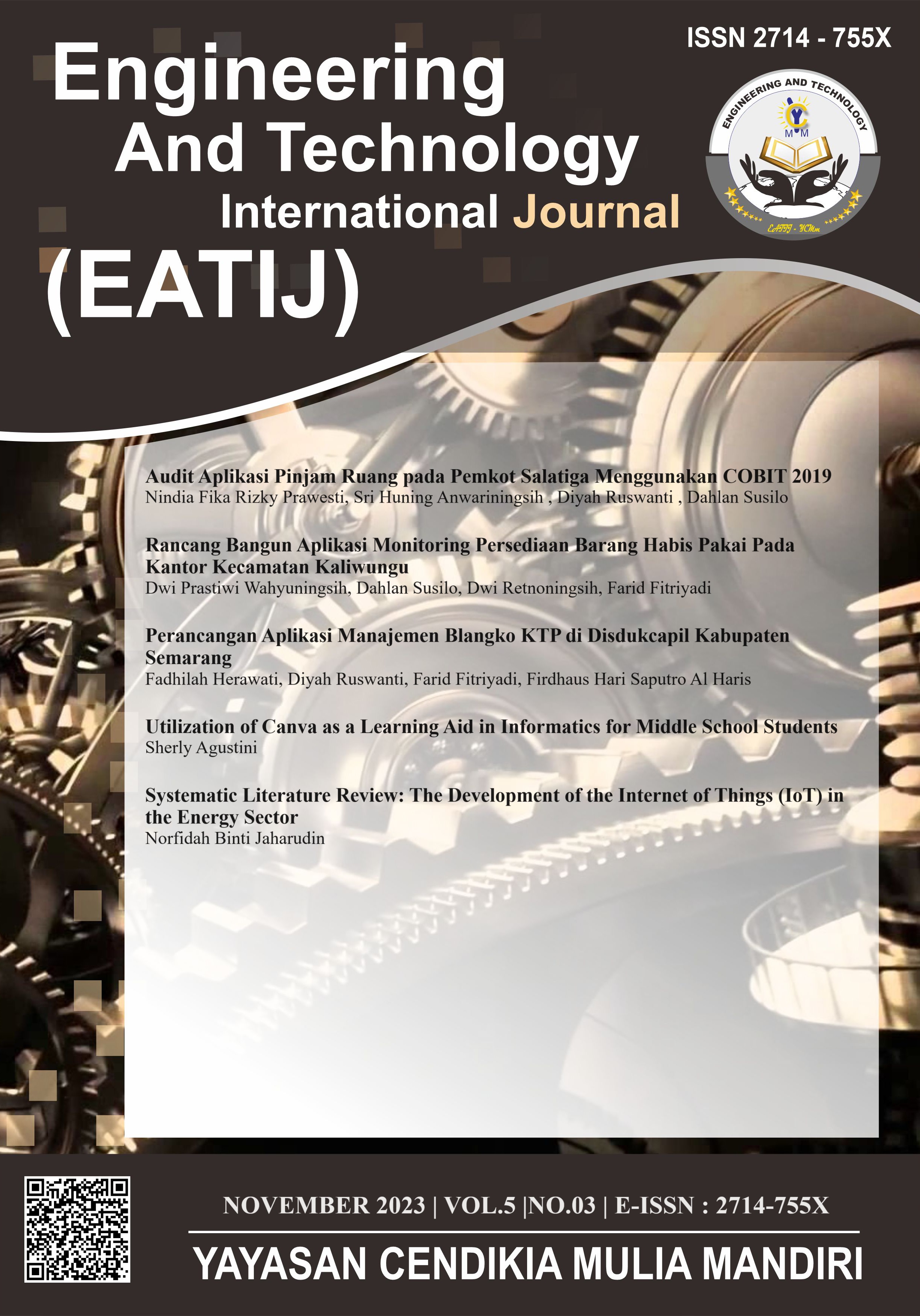Systematic Literature Review: The Development of the Internet of Things (IoT) in the Energy Sector
DOI:
https://doi.org/10.55642/eatij.v5i03.667Keywords:
Internet of Things (IoT), Energy Sector,Energy EfficiencyAbstract
This systematic literature review explores the development and application of the Internet of Things (IoT) in the energy sector, highlighting its potential to enhance efficiency and sustainability. Facing challenges like the need for higher efficiency, better resource management, and reduced environmental impact, the energy sector benefits significantly from IoT's innovative solutions. These include smart grids, home and building energy management, and industrial operations optimization, enabling real-time monitoring and control for better renewable energy integration and grid stability. Key findings show that IoT implementations can lead to substantial energy savings and environmental benefits. However, challenges such as data security, interoperability, and high implementation costs must be addressed. This review provides a comprehensive overview of IoT's role in energy efficiency and sustainability, offering insights for researchers, practitioners, and policymakers to develop effective strategies for integrating IoT in addressing global energy challenges.
Downloads
References
Nuryanto, H. (2012). Sejarah perkembangan teknologi informasi dan komunikasi. PT Balai Pustaka (Persero).
Siregar, L. Y., & Nasution, M. I. P. (2020). Perkembangan teknologi informasi terhadap peningkatan bisnis online. HIRARKI: Jurnal Ilmiah Manajemen Dan Bisnis, 2(1), 71-75.
Alomar, M. A. (2023). An IOT based smart grid system for advanced cooperative transmission and communication. Physical Communication, 58, 102069.
Kaur, B., Dadkhah, S., Shoeleh, F., Neto, E. C. P., Xiong, P., Iqbal, S., ... & Ghorbani, A. A. (2023). Internet of things (IoT) security dataset evolution: Challenges and future directions. Internet of Things, 100780.
Mina, M., & Kartika, K. (2023). Monitoring System for Levels of Voltage, Current, Temperature, Methane, and Hydrogen in IoT-Based Distribution Transformers. International Journal of Engineering, Science and Information Technology, 3(1), 22-27.
Putra, D. C. P., Dawami, I. R., Haq, M. R., Luthfiansyah, A. D. D., Mubarok, A., & Prasetyo, D. A. (2023). Konsep Rancang Bangun Smart Home Base Berbasis IOT untuk Skala Perumahan. Journal of Engineering Science and Technology, 1(2), 86-95.
Suarna, D., & Edy, E. S. (2023). Implementasi Internet of Things (IoT) dalam Memonitoring Komsumsi Listrik. Bulletin of Information Technology (BIT), 4(2), 163-170.
Suarna, D., Zainuddin, Z., & Sopyan, E. (2023). Rancang Bangun Pengontrolan Alat Elektronik Berbasis Internet of Things (IoT). Journal of Informatics, Electrical and Electronics Engineering, 2(3), 75-82.
Fitriyah, Q., & Putr, T. V. (2020, December). Pemanfaatan Aplikasi Blynk Sebagai Alat Bantu Monitoring Energi Listrik Pada Kulkas 1 Pintu. In Prosiding Seminar Nasional NCIET (Vol. 1, No. 1, pp. 84-92).
Dinata, A., & Sutabri, T. (2023). Perancangan Sistem Rekayasa Internet pada Implementasi Smarthome Berbasis IoT. Journal of Computer and Information Systems Ampera, 4(3), 169-183.
















